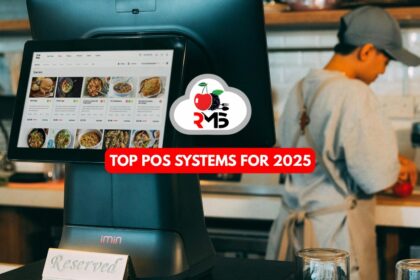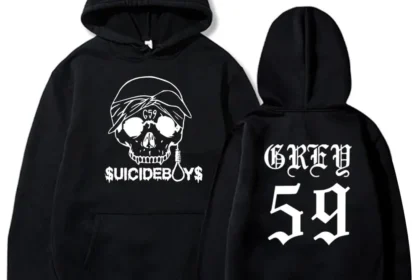Introduction to Social Media Influencer Marketing
In today’s fast-paced digital world, traditional marketing methods are no longer sufficient to reach and engage target audiences effectively. Brands are increasingly turning to a more authentic and impactful strategy known as social media influencer marketing. This innovative approach leverages the power of individuals who have cultivated loyal followings on platforms like Instagram, YouTube, TikTok, and LinkedIn. These influencers possess the ability to sway the opinions, attitudes, and buying decisions of their followers, making them valuable assets for businesses looking to build trust and visibility in an oversaturated market.
What is Social Media Influencer Marketing?
Social media influencer marketing is a form of collaboration between brands and individuals who have a strong presence and influence on social media platforms. These individuals, known as influencers, create content that promotes a brand’s products or services in a way that feels natural and relatable to their audience. The core idea is to use the influencer’s credibility and relationship with their followers to drive brand awareness, increase engagement, and ultimately boost sales. Unlike traditional advertising, which can feel intrusive or impersonal, influencer marketing feels like a recommendation from a trusted friend, which significantly enhances its effectiveness.
The Rise of Influencer Culture
The evolution of social media platforms has played a pivotal role in the rise of influencer culture. With billions of active users across platforms like Instagram, YouTube, TikTok, and Facebook, content creators have emerged as new-age celebrities. These influencers range from macro-influencers with millions of followers to micro-influencers who cater to niche audiences with a few thousand loyal fans. The authenticity and relatability that influencers bring have made them an essential part of digital marketing strategies. Consumers today are more likely to trust the opinion of a favorite influencer over a celebrity endorsement or a brand advertisement.
Types of Social Media Influencers
To understand the dynamics of influencer marketing, it’s essential to recognize the different categories of influencers based on their follower count and niche focus.
Mega-influencers typically have over a million followers and often include celebrities or well-known personalities. They offer extensive reach but may lack the niche focus or personal connection with followers.
Macro-influencers have a following ranging from 100,000 to a million. They are often content creators or industry experts who have built their influence over time.
Micro-influencers usually have between 10,000 to 100,000 followers. They focus on specific niches like beauty, fitness, travel, or tech and enjoy high engagement rates due to their closer connections with their audience.
Nano-influencers have under 10,000 followers but possess extremely loyal and engaged communities. Their content is often hyper-personalized, making them ideal for local or niche campaigns.
Benefits of Social Media Influencer Marketing
One of the primary advantages of influencer marketing is its ability to drive authentic engagement. Influencers know their audiences well and tailor their messaging accordingly, resulting in higher trust and conversion rates.
Enhanced Brand Awareness: Collaborating with influencers helps brands reach new and diverse audiences. When an influencer posts about a product or service, it introduces their followers to the brand in a natural setting.
Improved Credibility and Trust: Influencers have already built trust with their audience. When they endorse a product, their followers are more likely to trust the recommendation compared to traditional ads.
Cost-Effective Strategy: Compared to traditional advertising methods, influencer marketing can be more affordable, especially when working with micro or nano-influencers.
Better ROI and Conversions: Influencer marketing campaigns often yield higher return on investment because of the personalized and targeted nature of the content.
How Influencer Marketing Works
At the core of influencer marketing is collaboration. Brands identify influencers whose audience aligns with their target demographic. The process generally involves reaching out, negotiating deliverables and compensation, creating campaign briefs, and reviewing content before it goes live.
Content Creation: Influencers create unique content that promotes the brand while maintaining their authentic voice and style. This could be in the form of videos, stories, reels, static posts, unboxings, tutorials, or product reviews.
Platform Selection: The platform used for influencer marketing depends on the brand’s goals and the nature of the product. For visual products like fashion or beauty items, Instagram is ideal. For tutorials and tech products, YouTube works best. TikTok is popular for short, engaging content aimed at younger demographics.
Performance Tracking: Key metrics like engagement rate, impressions, clicks, conversions, and ROI are monitored to evaluate the success of the campaign. Tools like Google Analytics, affiliate codes, and UTM parameters help in tracking performance accurately.
Key Platforms for Influencer Marketing
Instagram remains the most popular platform for influencer marketing due to its visual nature and wide user base. Influencers utilize features like stories, reels, and IGTV to engage followers creatively.
YouTube is ideal for long-form content such as tutorials, reviews, and vlogs. Influencers can dive deep into product features and benefits, offering a more comprehensive perspective.
TikTok has emerged as a powerhouse for short, viral content. Its algorithm-driven reach allows even new influencers to gain significant traction quickly.
Facebook is still effective, especially for targeting older demographics and communities. Facebook groups and live videos are particularly engaging.
LinkedIn is becoming increasingly relevant for B2B influencer marketing. Thought leaders and industry experts can influence decision-makers with insightful content.
Choosing the Right Influencers for Your Brand
The success of any influencer campaign hinges on selecting the right influencers. Brands must evaluate several factors:
Audience Alignment: Ensure the influencer’s followers match your target demographic in terms of age, location, interests, and behavior.
Engagement Rate: High follower counts are meaningless without strong engagement. Look at likes, comments, shares, and saves to measure real impact.
Content Quality and Style: Evaluate whether the influencer’s content aligns with your brand image and tone.
Authenticity: Choose influencers who are genuine and transparent with their followers. Influencers with overly promotional content may not resonate well.
Past Collaborations: Review past brand partnerships to understand how the influencer executes paid content and how their audience responds.
Creating an Effective Influencer Marketing Strategy
An effective influencer marketing strategy begins with clearly defined goals. Are you looking to increase brand awareness, generate leads, drive website traffic, or boost sales? Once objectives are clear, the next steps include:
Budget Planning: Determine how much you’re willing to invest in influencers, content production, and ad spend.
Campaign Brief: Prepare a detailed brief outlining expectations, brand messaging, content guidelines, and key deliverables.
Collaboration Terms: Establish deliverables, timelines, and compensation models such as flat fees, affiliate commissions, or product gifting.
Monitoring and Analytics: Use tracking tools and KPIs to measure performance and gather insights for future campaigns. Adjust your strategy based on what works and what doesn’t.
Trends in Social Media Influencer Marketing
The influencer marketing landscape continues to evolve rapidly. Some of the latest trends include:
Rise of Nano and Micro-Influencers: Brands are increasingly valuing smaller influencers for their high engagement and niche relevance.
AI-Powered Influencer Tools: Platforms now use AI to help brands find the best influencers, predict campaign outcomes, and analyze performance.
Video Content Dominance: Short-form video content like TikTok videos and Instagram Reels is outperforming static content.
Long-Term Partnerships: Brands are shifting from one-off campaigns to long-term relationships with influencers to build continuity and trust.
Employee Influencers: Companies are now encouraging employees to become brand advocates, adding authenticity and behind-the-scenes insights.
Challenges in Influencer Marketing
Despite its advantages, influencer marketing comes with challenges that brands need to navigate carefully.
Fake Followers and Engagement: Some influencers inflate their metrics with bots. Brands must use tools to verify authenticity.
Content Authenticity: Overly scripted or promotional content can backfire, making audiences skeptical.
Regulatory Compliance: Brands and influencers must disclose paid partnerships clearly to stay compliant with advertising laws.
ROI Measurement: Quantifying the exact ROI from influencer campaigns can be complex due to the many touchpoints in the customer journey.
Brand Misalignment: Partnering with the wrong influencer can harm brand reputation. Thorough vetting is essential.
Case Studies of Successful Influencer Campaigns
Several brands have successfully leveraged influencer marketing to scale their presence.
Daniel Wellington used thousands of micro-influencers to popularize its watches worldwide, offering unique discount codes and reposting user-generated content.
Gymshark partnered with fitness influencers to grow from a small startup into a global fitness brand.
Glossier grew its cosmetic brand by focusing on real customers and micro-influencers rather than celebrities.
HelloFresh collaborated with food bloggers and YouTubers to showcase their meal kits, resulting in a significant boost in subscriptions.
The Future of Social Media Influencer Marketing
As consumer preferences continue to evolve, influencer marketing is expected to become more personalized, data-driven, and integrated.
Increased Personalization: Brands will focus on hyper-targeted influencer content tailored to specific customer segments.
Integration with E-commerce: Features like Instagram Shopping, YouTube product tagging, and TikTok Shop will blur the line between content and commerce.
Use of AR and VR: Augmented and virtual reality experiences will offer immersive influencer campaigns in the near future.
Influencer Marketplaces: Platforms that connect brands with vetted influencers will become more mainstream, simplifying collaboration and scaling.
Emphasis on Values and Purpose: Consumers are increasingly supporting brands that align with their values. Influencers who advocate for social causes, sustainability, and inclusivity will gain more prominence.
Conclusion
Social media influencer marketing is more than just a trend—it is a transformative approach reshaping how brands interact with consumers. Its ability to build trust, drive engagement, and create meaningful connections makes it an indispensable part of modern marketing strategies. By understanding its dynamics, staying updated with trends, and choosing the right influencers, brands can harness its full potential. As digital ecosystems evolve, those who master the art of influencer marketing will stay ahead in the competitive landscape, cultivating not just customers, but loyal brand advocates.




